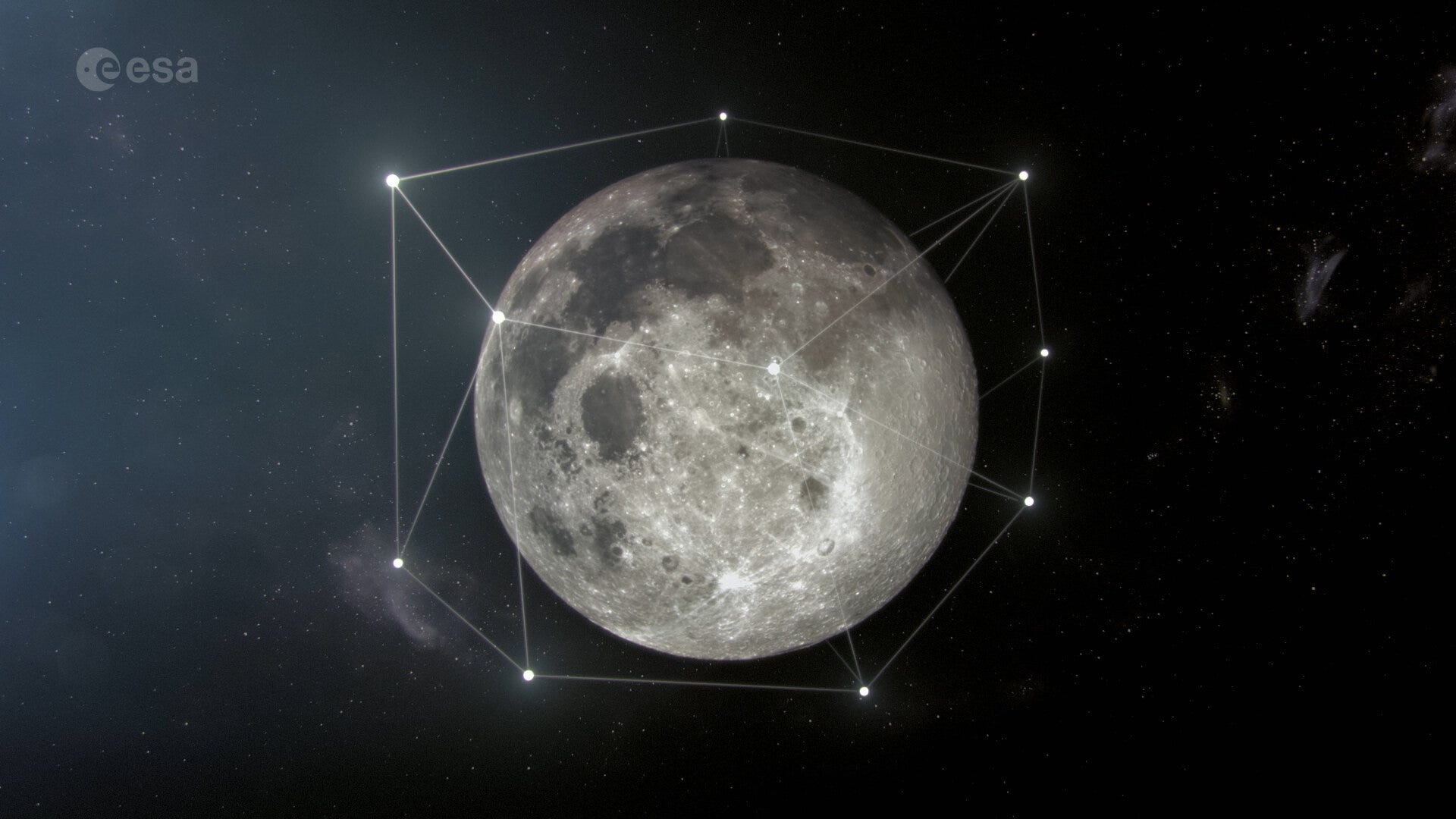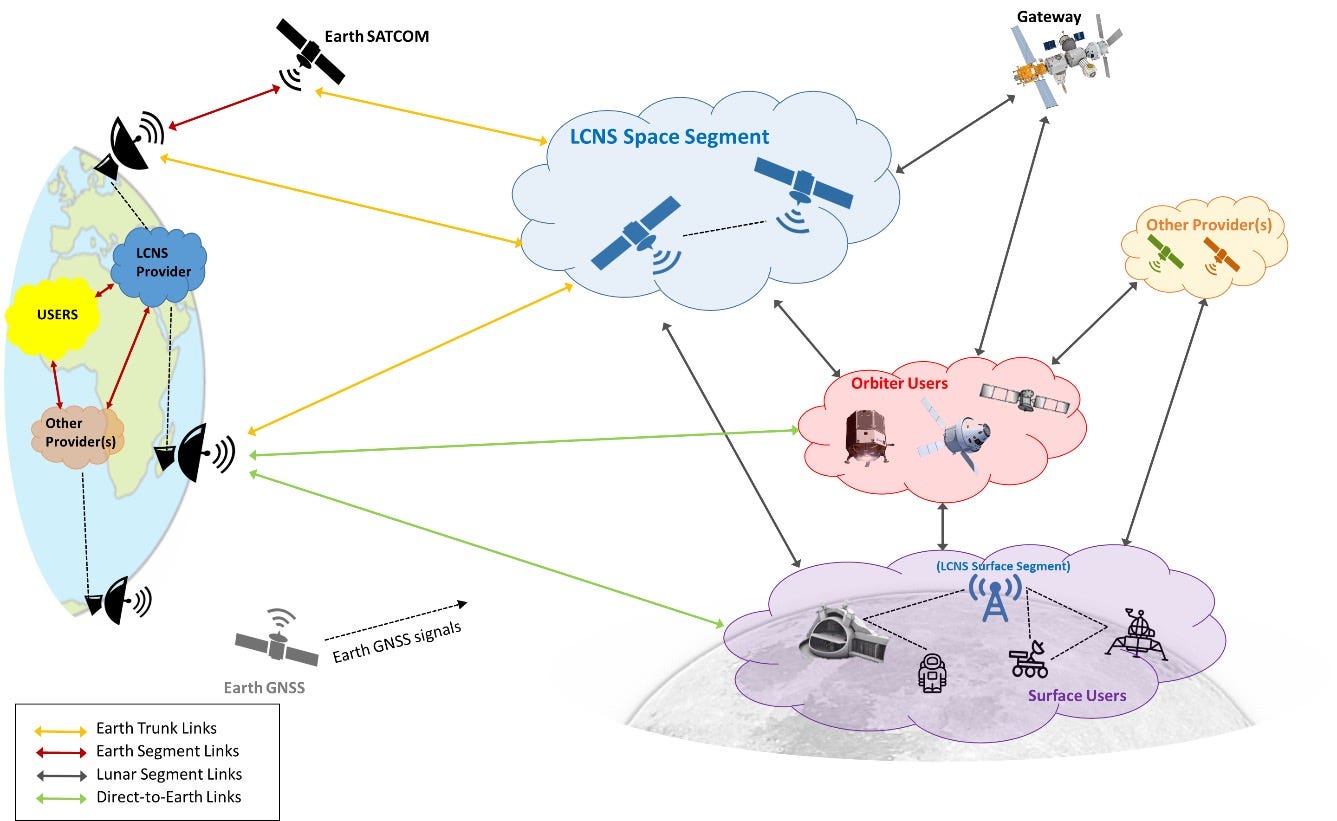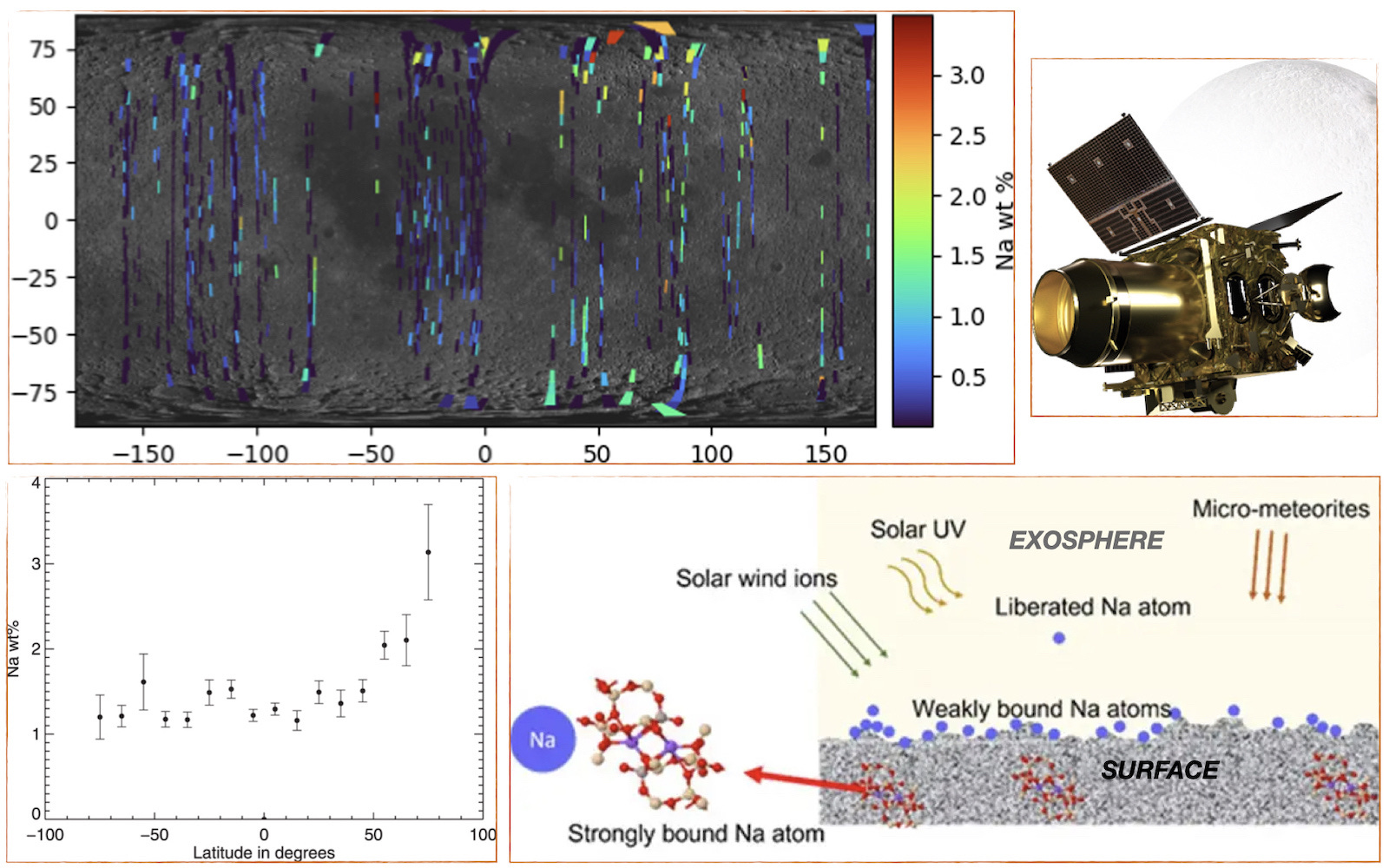Moon Monday #98: ESA Moonlight, a surviving CAPSTONE, Turkey’s Moonshot, community events, and more
ESA’s Moonlight constellation plans forge forward
Why build a constellation of lunar satellites that provide navigation and communications services around the Moon?
For one, a NavCom service will enable cost-effective Moon missions, as spacecraft would no longer need their own hefty communications hardware and rented ground infrastructure. Nations with smaller space budgets can take advantage of this to send their own missions. Such a service can also facilitate missions to the Moon’s farside, where a communications relay is required, and even aid hardware on the poles, where Earth visibility is limited. The latter is especially useful for future rovers venturing inside permanently shadowed regions. Moreover, a lunar NavCom service could provide a common time reference for Moon-based fundamental physics and astronomy experiments, including for farside radio astronomy.

It’s with that vision, named “Moonlight” by ESA, that the agency funded two consortia of companies in May 2021 to determine the feasibility of having a commercial lunar NavCom service. In February 2022, ESA detailed Moonlight’s expected capabilities, and integrated formal community feedback on the service’s use cases and applications. Now with a good notional idea of required infrastructure for the service, ESA is asking companies/consortia from its member states, including Canada, to indicate their interest by end of October 28 in developing the project or its associated technologies as well as provide feedback. Based on that, ESA will formally solicit proposals in December to co-fund companies to build Moonlight by end of decade.
Moonlight will be part of the proposals seeking a green light at ESA’s Ministerial Council in November 2022, a meeting of government ministers from each of the agency’s 22 Member States. ESA will be the anchor customer of Moonlight but expects companies to actively commercially provide NavCom services to public and private customers globally. To that end, ESA is also providing up to €200,000 per study to entities proposing viable business concepts and lunar economy applications that would benefit from or be enabled by Moonlight.

As a pathfinder to Moonlight, ESA signed a contract with SSTL in September 2021 worth $23.5 million to get communications services from the company’s aptly named Lunar Pathfinder orbiter. This commercial relay spacecraft will be deployed into lunar orbit by 2025 by a Moon lander competitively selected by NASA under the agency’s CLPS program. In return, ESA will let NASA use Pathfinder to relay communications between Earth and its robotic hardware on the Moon, particularly for the agency’s CLPS missions on the farside.
Moonlight isn’t the only NavCom network being planned:
- NASA wants a similar navigation service called LunaNet, which might integrate with Moonlight.
- ArkEdge Space, Aquarian Space and Plus Ultra each want to build their own such network.
- In April 2022, China announced intentions to build their own NavCom constellation to support their future missions and the upcoming long-term scientific base on the Moon’s south pole.
Related: ESA’s November Ministerial Council meeting will also decide the fate of the ambitious and versatile European Large Logistics Lander.
Another CLASSy find by Chandrayaan 2
India’s Chandrayaan 2 orbiter has created the first ever global-scale sodium maps of our Moon. The discovery comes from the CLASS X-ray instrument onboard, which is globally mapping elements at the highest resolution till date to help constrain the composition and evolution of the Moon’s crust. CLASS previously sensed Chromium on the Moon, a first such detection in X-rays, and even detected energetic solar events.
Studies of lunar sodium so far have largely been via ground telescopes because the element doesn’t have a distinct signature in visible or near-infrared light wavelengths in which orbiters typically map. However, sodium does have characteristic X-rays, which Chandrayaan 1 detected on the Moon and now the Chandrayaan 2 orbiter is advancing by providing global mapping.

The orbiter’s findings plausibly explain the presence of relatively ample sodium in the Moon’s exosphere, which scientists discovered in 2021 forms a diffuse, comet‐like glowing tail every New Moon—it’s unfortunately much fainter than our eyes can see. CLASS’s detection of veneers of loosely bound sodium atoms across the Moon’s surface imply that solar radiation can liberate them into the exosphere with ease. This is an important step forward in better understanding such interactions not just on our Moon but on similar airless bodies like Mercury.
Many thanks to Epsilon3 for sponsoring this week’s Moon Monday.
CAPSTONE lives!
On September 8, the NASA-funded and Advanced Space-led CAPSTONE spacecraft put itself in safe mode after it started tumbling at the end of a planned trajectory correction maneuver. Over the next couple of weeks, teams and operators managed to spin-stabilize the spacecraft, and have it generate adequate power and send more telemetry for extensive analysis.
Teams subsequently determined that a partially open valve in one of the eight thrusters likely caused the spacecraft to thrust whenever the propulsion system was pressurized, and have uploaded new commands to ignore that thruster and successfully regained full, 3-axis attitude control on CAPSTONE. Teams are trying to figure out how to operate the spacecraft despite the faulty valve while trying to fix the latter. The good news is CAPSTONE remains on its intended fuel-saving ballistic transfer to the Moon for orbital capture on November 13, so the mission is still on.
Turkey’s first Moon mission is taking shape
A Swedish instrument will be onboard Turkey’s first Moon mission, the AYAP-1 orbiter. By analyzing how highly energetic neutral atoms in the solar wind slam the Moon’s surface and get reflected, the instrument will be able to study surface elements as well as local magnetic fields. Not much is known about Turkey’s AYAP-1 mission itself though. The spacecraft will roughly be in a 100 kilometers circular lunar orbit for at least three months, and likely launch no earlier than 2024.
The Swedish instrument onboard is the successor of the SARA instrument onboard India’s Chandrayaan 1 Moon mission but has approximately seven times higher spatial resolution, which will be especially useful for studying permanently shadowed regions. SARA helped scientists better estimate the amount and distribution of water or hydroxyl locked in the soil across the Moon, which proved timely for ESA’s BepiColombo mission to Mercury carrying two similar water-detecting instruments.
More Moon
- South Korea’s first lunar orbiter KPLO has crossed its furthest point from Earth at 1.56 million kilometers away, and remains on track to arch its way back to the Moon—like CAPSTONE—for orbital capture on December 16. Teams operating NASA’s ultra-sensitive ShadowCam onboard have acquired nearly 100 dark space images to calibrate the camera ahead of its much awaited novel views of literally seeing inside permanently shadowed regions of our cosmic neighbor.
- Remember when researchers grew plants in Apollo lunar soil? The lead scientists discuss more of the work in a recent episode of Houston, We Have a Podcast.
- Engineers keep the lunar-bound Orion spacecraft’s more than 11 kilometers of cabling organized with tie-wraps.
Upcoming Events
This month and next will see members of the global lunar community convene at many key events that help shape exploration of our Moon.
- October 13–15: International Lunar Search and Rescue Conference
- October 14: Lunar Surface Science Workshop 18, Implementing a Coordinated Lunar Resource Evalun Campaign
- October 26–28: Apollo 17 - ANGSA Workshop
- November 1–2: Inclusion Plan Best Practices Workshop (By NASA SMD)
- November 2–4: Lunar Polar Volatiles Conference
- November 2–3: LSIC Fall Meeting
- November 8-10: 6th Global Moon Village Workshop & Symposium
- November 22–23: ESA’s Ministerial Council Meeting
Mentioning this list here is a result of a related suggestion by Michael Nord to have a centralized “Lunar Events Calendar”. I thought merely listing these frenzied happenings for now would help gauge community interest in Moon Monday providing such a thing. While the exhaustive Downrange by Space Calendar and Marcia Smith’s excellent Events Calendar already exist, their coverage of everything space can be too noisy for lunar-specific needs. These also sometimes lack mentions of events that might be too niche for their purposes. So let me know if you found my events listing useful with the poll below.
Also, a related reminder that I’m on a lunar discussion panel with the Australian Space Agency on October 13. If you’re interested in Indian and Australian lunar exploration plans, and how they (can) fit into ever-growing international lunar activities, register here for free.
→ Browse the Blog | About | Donate ♡
